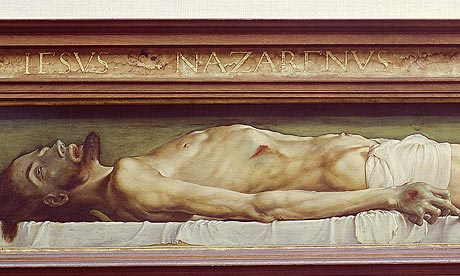Ippolit continues his explanation by describing his encounter with Rogozhin. The two only recently met, and, despite Ippolit's declaring how different they are, one similarity they share is their aversion to Myshkin. Though Ippolit chooses not to disclose the details of their conversation, one figures Myshkin must be an explored topic.
Ippolit accompanies Rogozhin to his home and comments that it is "like a graveyard." Not only does this description correspond with Myshkin's description but it contrasts directly with Ippolit's earlier pursuit of life. Now he is making acquaintence with a potential murderer who obviously does not value life. While at Rogozhin's home, Ippolit also notices the Holbein painting and is captivated by it. He notes how other artists have painted Christ in the beauty of his sacrifice but Holbein's work has "no trace of beauty." Instead, there is agony in every detail, having the "look of suffering in the face." Ippolit does not understand how nature, which he calls "a merciless, dumb beast," could be so cruel to a perfect being. Christ is depicted devoid of divinity, not appearing as the Son of God but as an individual recently beaten to death.

No comments:
Post a Comment